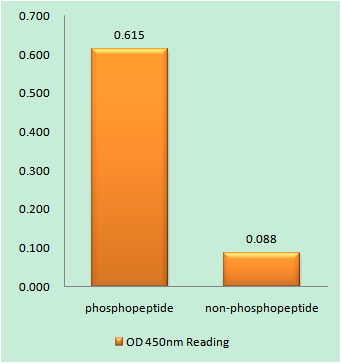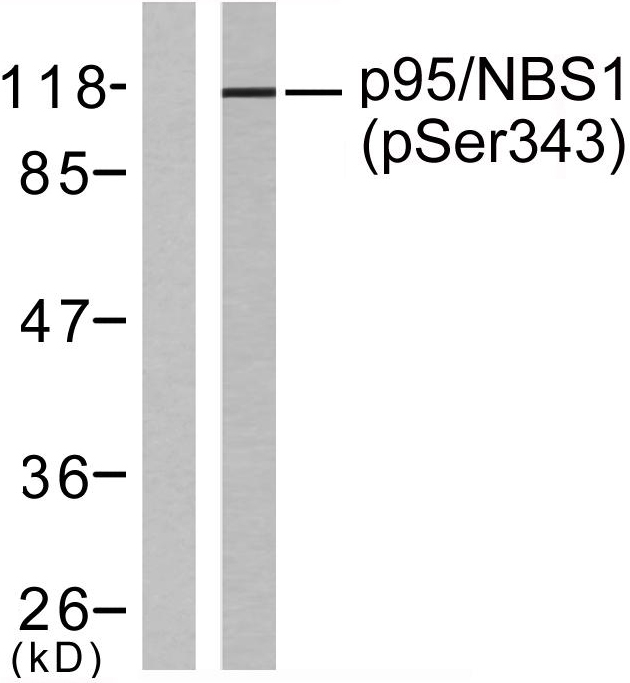
Catalog: KA1532C
Size
Price
Status
Qty.
96well
$470.00
In stock
0
Add to cart


Collected


Collect
Main Information
Reactivity
Human
Applications
ELISA
Conjugate/Modification
Phospho
Detailed Information
Storage
2-8°C/6 months,Ship by ice bag
Modification
Phospho
Detection Method
Colorimetric
Related Products
Antigen&Target Information
Gene Name:
NBN
show all
Other Name:
Nibrin ;
Cell cycle regulatory protein p95 ;
Nijmegen breakage syndrome protein 1 ;
Cell cycle regulatory protein p95 ;
Nijmegen breakage syndrome protein 1 ;
show all
Background:
disease:Defects in NBN are a cause of genetic susceptibility to breast cancer (BC) [MIM:114480]. BC is an extremely common malignancy, affecting one in eight women during their lifetime. A positive family history has been identified as major contributor to risk of development of the disease, and this link is striking for early-onset breast cancer.,disease:Defects in NBN are the cause of Nijmegen breakage syndrome (NBS) [MIM:251260]. NBS is an autosomal recessive syndrome characterized by chromosomal instability, radiation sensitivity, microcephaly, growth retardation, immunodeficiency and predisposition to cancer, particularly to lymphoid malignancies.,disease:Defects in NBN may be associated with aplastic anemia [MIM:609135]. Aplastic anemia is a disease of bone-marrow failure characterized by peripheral pancytopenia and marrow hypoplasia. Most of the cases of aplastic anemia are idiopathic, some are familial and some are due to a viral infection or to exposure to chemicals and radiation.,disease:Defects in NBN might play a role in the pathogenesis of childhood acute lymphoblastic leukemia (ALL).,domain:The C-terminal domain contains a MRE11-binding site, and this interaction is required for the nuclear localization of the MRN complex.,domain:The EEXXXDDL motif at the C-terminus is required for the interaction with ATM and its recruitment to sites of DNA damage and promote the phosphorylation of ATM substrates, leading to the events of DNA damage response.,domain:The FHA and BRCT domains are likely to have a crucial role for both binding to histone H2AFX and for relocalization of MRE11/RAD50 complex to the vicinity of DNA damage.,function:Component of the MRE11/RAD50/NBN (MRN complex) which plays a critical role in the cellular response to DNA damage and the maintenance of chromosome integrity. The complex is involved in double-strand break (DSB) repair, DNA recombination, maintenance of telomere integrity, cell cycle checkpoint control and meiosis. The complex possesses single-strand endonuclease activity and double-strand-specific 3'-5' exonuclease activity, which are provided by MRE11A. RAD50 may be required to bind DNA ends and hold them in close proximity. NBN modulate the DNA damage signal sensing by recruiting PI3/PI4-kinase family members ATM, ATR, and probably DNA-PKcs to the DNA damage sites and activating their functions. It can also recruit MRE11 and RAD50 to the proximity of DSBs by an interaction with the histone H2AX. NBN also functions in telomere length maintenance by generating the 3' overhang which serves as a primer for telomerase dependent telomere elongation. NBN is a major player in the control of intra-S-phase checkpoint and there is some evidence that NBN is involved in G1 and G2 checkpoints. The roles of NBS1/MRN encompass DNA damage sensor, signal transducer, and effector, which enable cells to maintain DNA integrity and genomic stability.,miscellaneous:In case of infection by adenovirus E4, the MRN complex is inactivated and degraded by viral oncoproteins, thereby preventing concatenation of viral genomes in infected cells.,PTM:Phosphorylated by ATM in response of ionizing radiation, and such phosphorylation is responsible intra-S phase checkpoint control and telomere maintenance.,sequence caution:Contaminating sequence. Potential poly-A sequence starting in position 550.,similarity:Contains 1 BRCT domain.,similarity:Contains 1 FHA domain.,subcellular location:Localizes to discrete nuclear foci after treatment with genotoxic agents.,subunit:Component of the MRN complex composed of two heterodimers RAD50/MRE11A associated with a single NBN. Component of the BASC complex, at least composed of BRCA1, MSH2, MSH6, MLH1, ATM, BLM, RAD50 and MRE11A (By similarity). Interacts with histone H2AFX this requires phosphorylation of H2AFX on 'Ser-139'. Interacts with HJURP, KPNA2 and TERF2.,tissue specificity:Ubiquitous. Expressed at high levels in testis.,
show all
Function:
cell cycle checkpoint, DNA damage checkpoint, M phase, telomere maintenance, in utero embryonic development, cell activation, blastocyst development, blastocyst growth, somatic diversification of immune receptors, somatic recombination of immunoglobulin genes during immune response, somatic diversification of immunoglobulins during immune response, adaptive immune response, immune effector process, immunoglobulin production, immunoglobulin production during immune response, production of molecular mediator of immune response, leukocyte mediated immunity, lymphocyte mediated immunity, adaptive immune response based on somatic recombination of immune receptors built from immunoglobulin superfamily domains, immune system development, somatic diversification of immune receptors via germline recombination within a single locus, DNA metabolic process, regulation of DNA replication, DNA repair, double-strand break repair, DNA recombination, immune response, response to DNA damage stimulus, cell cycle, cell cycle arrest, mitotic cell cycle checkpoint, mitotic cell cycle G2/M transition DNA damage checkpoint, meiosis, intracellular signaling cascade, regulation of mitotic cell cycle, cell proliferation, positive regulation of cell proliferation, embryonic development ending in birth or egg hatching, immunoglobulin mediated immune response, somatic cell DNA recombination, somatic diversification of immunoglobulins, somatic recombination of immunoglobulin gene segments, B cell mediated immunity, cell cycle process, cell cycle phase, regulation of DNA replication initiation, DNA damage response, signal transduction by p53 class mediator, DNA integrity checkpoint, G2/M transition DNA damage checkpoint, G1/S transition checkpoint, G2/M transition checkpoint, telomere organization,cellular response to stress, growth, B cell activation, regulation of cell proliferation, response to drug, homeostatic process, DNA damage response, signal transduction, chordate embryonic development, isotype switching, leukocyte activation, negative regulation of cell differentiation, regulation of neuron differentiation, negative regulation of neuron differentiation, lymphocyte activation, regulation of fibroblast proliferation, developmental growth, regulation of neurogenesis, neurological system process, neuromuscular process controlling balance, neuromuscular process,regulation of DNA metabolic process, chromosome organization, meiotic cell cycle, M phase of meiotic cell cycle,regulation of cell cycle, regulation of nervous system development, anatomical structure homeostasis, regulation of cell development,
show all
Cellular Localization:
Nucleus . Nucleus, PML body . Chromosome, telomere . Chromosome . Localizes to discrete nuclear foci after treatment with genotoxic agents (PubMed:26438602, PubMed:10783165, PubMed:26215093). Acetylation of 'Lys-5' of histone H2AX (H2AXK5ac) promotes NBN/NBS1 assembly at the sites of DNA damage (PubMed:26438602). .
show all
Tissue Expression:
Signaling Pathway
Reference Citation({{totalcount}})
Catalog: KA1532C
Size
Price
Status
Qty.
96well
$470.00
In stock
0
Add to cart


Collected


Collect
Recently Viewed Products
Clear allPRODUCTS
CUSTOMIZED
ABOUT US
Toggle night Mode
{{pinfoXq.title || ''}}
Catalog: {{pinfoXq.catalog || ''}}
Filter:
All
{{item.name}}
{{pinfo.title}}
-{{pinfo.catalog}}
Main Information
Target
{{pinfo.target}}
Reactivity
{{pinfo.react}}
Applications
{{pinfo.applicat}}
Conjugate/Modification
{{pinfo.coupling}}/{{pinfo.modific}}
MW (kDa)
{{pinfo.mwcalc}}
Host Species
{{pinfo.hostspec}}
Isotype
{{pinfo.isotype}}
Product {{index}}/{{pcount}}
Prev
Next
{{pvTitle}}
Scroll wheel zooms the picture
{{pvDescr}}


















